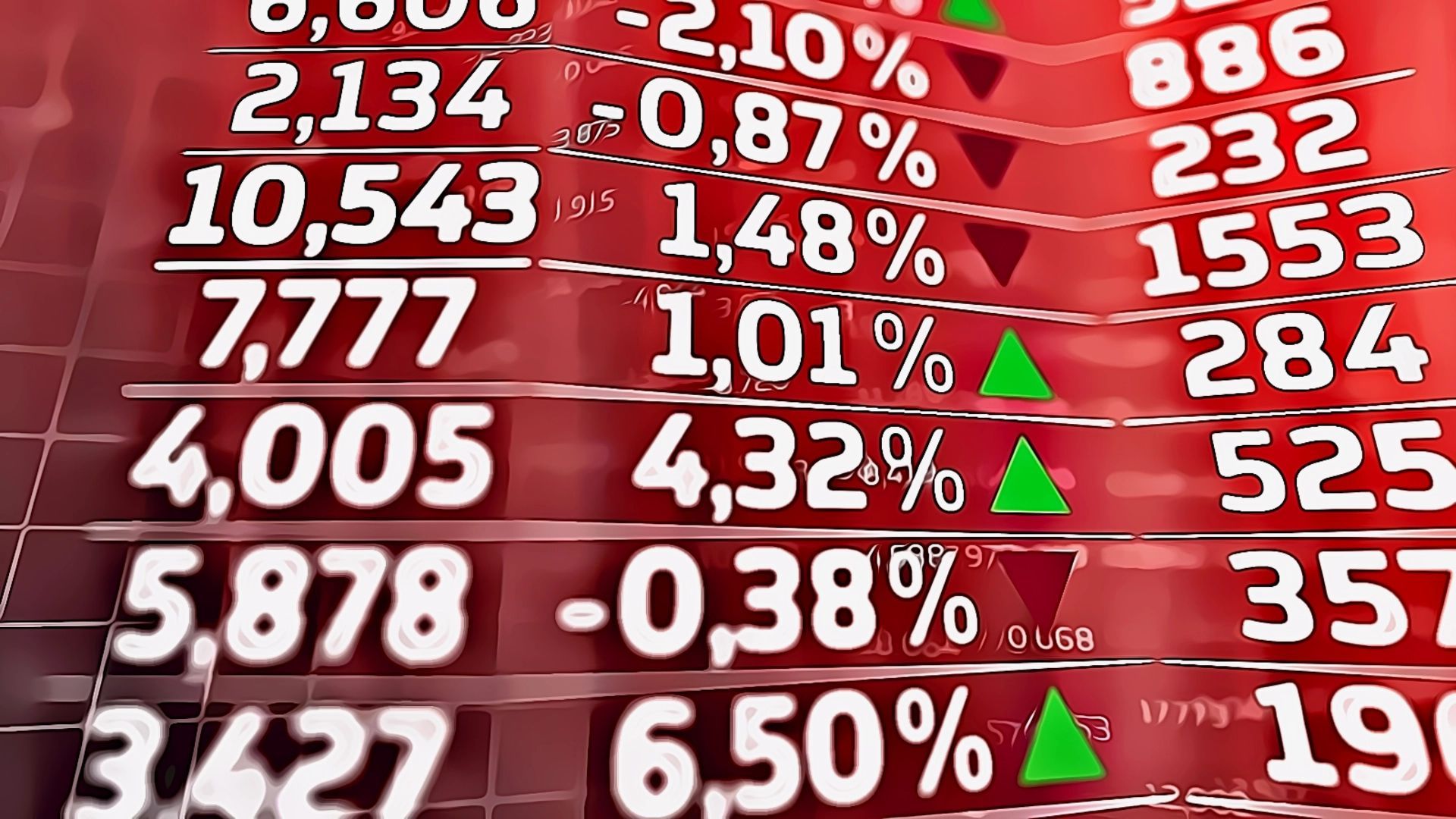
Medical diagnostics company Semler Scientific has reported steep unrealized losses on its Bitcoin holdings. In its most recent SEC filing dated April 15, the company revealed a paper loss of approximately $41.8 million for the first quarter of 2025. This loss stems from the sharp drop in BTC prices, which slid from $93,500 at the beginning of January to almost $82,000 by March 31. Semler Scientific Sees Steep Losses Despite the downturn , Semler remains heavily invested in the cryptocurrency and holds 3,182 BTC at quarter’s end. The firm, which ranks as the twelfth-largest corporate Bitcoin holder globally, right above Boyaa Interactive International Limited, continues to double down on its digital asset strategy. CEO Doug Murphy-Chutorian reiterated this stance when he affirmed the company’s dual focus on Bitcoin accumulation and ongoing healthcare innovation. Financially, Semler projected modest revenue between $8.8 million and $8.9 million for the quarter, but operating losses are expected to land between $1.3 million and $1.5 million. As of March 31, Semler reported having about $10 million in cash and cash equivalents. In yet another strategic move, the company also announced plans to issue up to $500 million in securities, the proceeds of which are earmarked for general corporate purposes, including continued cryptocurrency purchases. However, investor sentiment appears wary. The company’s stock, traded under the ticker SMLR on the Nasdaq, has declined by more than 22% since the start of the year. Agreement With DOJ Semler Scientific announced via a separate 8-K filing that it has reached an agreement-in-principle to resolve longstanding legal concerns with the Department of Justice (DOJ). The company said that it is prepared to pay around $30 million to address allegations that it violated the False Claims Act through improper marketing practices tied to devices billed to Medicare. The DOJ’s civil investigation dates back to 2017, when it issued a formal demand to examine potential fraud. While this proposed settlement would mark a major step toward resolution, Semler’s filing noted that a finalized agreement with the agency is not yet guaranteed. The post Semler Scientific Reports $41.8 Million Bitcoin-Related Paper Loss in Q1 2025 appeared first on CryptoPotato .
Crypto Potato
You can visit the page to read the article.
Source: Crypto Potato
Disclaimer: The opinion expressed here is not investment advice – it is provided for informational purposes only. It does not necessarily reflect the opinion of BitMaden. Every investment and all trading involves risk, so you should always perform your own research prior to making decisions. We do not recommend investing money you cannot afford to lose.
Has Ethereum Turned Itself Around? Experts Weigh In

“The Ethereum ship is slowly turning around,” claimed David Hoffman from Bankless on April 19. He added that the process started over six months ago and changes are already observable, highlighting six areas of change Ethereum is undergoing. The project went through a rough patch earlier this year with leadership issues at the Ethereum Foundation, developers jumping ship, and record levels of FUD being disseminated. However, despite that, it is still the industry standard network for DeFi, stablecoins, real-world asset tokenization , and decentralized applications. Evolution of Ethereum After primarily being research-focused for years, Ethereum is now recognizing the need to adapt in response to competitive pressures that emerged around 2021, argues Hoffman. He added that the Ethereum community is actively addressing these issues through aggressive layer-1 scaling, with plans to increase gas limits tenfold over two years. There has also been a shift from protocol-first to product-first thinking, with new leadership roles, and the Ethereum Foundation is taking a more active coordinating role with new co-executive directors. He also said there is now a more inclusive culture as the doors to the “Ivory Tower” open, enabling a welcoming ecosystem of voices into roadmap conversations. There is better layer-2 integration and developing interoperability standards, positioning Ethereum layer-1 service provider to L2s. Finally, an increased urgency is embracing shorter roadmap cycles and faster protocol upgrades. “Ethereum’s Strategic Pivot” The Ethereum ship is slowly turning around. In fact, this process started over 6 months ago – changes are already observable I wrote an article on @BanklessHQ doing my best to identify6️⃣arenas of change Ethereum is undergoing Read! pic.twitter.com/zxDOXOlVdP — David Hoffman (@TrustlessState) April 19, 2025 In a recent podcast Ethereum Foundation researchers Ansgar Dietrichs and Dankrad Feist said that the organization was stepping up to facilitate these steps. “Parts of the Ethereum community have been pushing for this shift, while others have been resisting it,” said Hoffman, who added, “Ethereum is a big tent that holds space for many different voices.” The Scaling Debate Uniswap founder Hayden Adams weighed in on the Ethereum scaling debate , stating, “I’m all for scaling improvements to L1, the rollup-centric roadmap actually requires it,” but pointing out that if Ethereum ultimately relies on L1 to support DeFi, Solana may have a stronger roadmap, team, and scaling model. He argued Ethereum should stick to its rollup-centric layer-2 scaling strategy, which it has developed over the past five years. “People need to pick a lane and attempt to mitigate the risks associated with it vs scrambling to shift narratives and strategy every month.” He added that he was also against “just do every approach,” which is probably the only thing worse than not picking an approach. Meanwhile, Ethereum prices remain at March 2023 levels, failing to push much higher than $1,600 so far this weekend. The post Has Ethereum Turned Itself Around? Experts Weigh In appeared first on CryptoPotato . Crypto Potato

Stablecoins Signal Risk-Off Shift Amid Slowing Supply Growth
For a long time, stablecoins have been the backbone of the digital asset ecosystem. They are essential to crypto’s liquidity landscape, providing the sorts of dollar-pegged assets that facilitate trades and offer safety in otherwise volatile markets. But of late, they’ve been looking a bit less stable—and for a few pretty plausible reasons. #Stablecoin supply growth remains positive but has softened in recent weeks. As stablecoins serve as core quote assets across crypto markets, this slowdown adds further evidence of a broad contraction in digital asset liquidity and a more risk-off environment. pic.twitter.com/2ccBnwsSzp — glassnode (@glassnode) April 17, 2025 As almost every crypto exchange and trading pair, stablecoins like USDT, USDC, and DAI, have core quote assets. These assets signal capital movement and sentiment. When the supply of these assets is rising, it almost always indicates that an influx of fresh capital is coming into the space and is ready to be deployed into some of the riskier assets. At times when capital isn’t flowing into the forced reserve stablecoins, we can assume that investors are either pulling capital from the space or sitting in the space waiting for clearer market signals. The recent slowdown in stablecoin supply expansion, while subtle, is adding to accumulating signs that the wider crypto market might be entering a more prudent phase. After a year that was 2024—speculatively by the main meme coin manias, AI token rallies, and a deluge of fresh on-chain projects—that part of the crypto world seemed more like the deep, blue sea than the promising surf zone. And this is not to even mention at the turn from late 2024 into early 2025 and what might happen to crypto price action and trading volume if the Fed persistently keeps interest rates high. #Stablecoin transaction volume surpassed Visa`s payment volume for the first time in 2024 in 2024, according to reports. pic.twitter.com/qLJH5Lg5iH — Christiaan (@ChristiaanDefi) April 17, 2025 Stablecoins Outpace Visa in Transaction Volume Even with this growth slowdown, stablecoins’ influence in international finance appears to be gaining. Reports suggest that, for the first time ever, stablecoins cleared more in payments than the Visa network does in a year. That’s quite a milestone for an asset class that many in traditional finance still view as a bit of a wild child. But what’s happening here isn’t just a crypto thing. This is also about transactions based on U.S. dollars, and stablecoins clearing payment volumes in a dollar-dominated world. Tether (USDT) has seen a 13% increase in users in Q1 2025, showcasing its role as a key financial tool in developing countries facing economic challenges. More info https://t.co/S5T6AnqxoQ #Crypto #Investment #USDT #Stablecoin #Finance — Cobak (@CobakOfficial) April 15, 2025 Fast, low-cost and borderless transactions—that’s what you get with stablecoins. This makes them a not-so-secret weapon for not just traders but also businesses, remittance platforms, and individuals wandering through the financial desert of unstable monetary policy. These dollar-backed digital currencies are part of a shift that threatens to take a huge bite out of the payment systems operated by traditional banking giants. Among all stablecoins, Tether (USDT) remains the forerunner in adoption. In the first quarter of 2025, USDT had a user base that increased by 13%—that is, a significant leap that indicates growing usefulness in the very sort of places where its sort of decentralized functionality is most desired: developing nations. Those from the developed world who are poor and who are told they might as well stay poor are increasingly using Tether to shield themselves and their families from the sorts of things that make a currency unstable, inflation guaranteed, and financial system collapse all but certain. The expanding utility places stablecoins at a unique intersection of the crypto innovation and real-world financial resilience. While the speculative use cases may ebb and flow, the demand for stable, accessible, and censorship-resistant money remains persistently strong, especially in places where conventional finance fails. But, the macroeconomic headwinds we encounter don’t just blow against stablecoins; they blow against the whole crypto market and the whole economy. A sustained recession or series of negative quarter-on-quarter GDP reports (which can sometimes happen) can lead to memories of the Great Depression. These are waters the whole crypto market is trying not to tread. The worry among stablecoin issuers is that regulators may restrict the amount of cash that can back a stablecoin. However, a recent report from the International Monetary Fund notes that funds held at banks may not be enough to back all the stablecoins in circulation. If that’s the case, stablecoins are at another near-death experience. However, at present, stablecoins exemplify how crypto can shake up and make financial systems more accessible. Stablecoins were in the Digital Dollar 1.0 phase. They now meditate on what the next phase looks like. That is why they are here, reading from the same hymnal but acknowledging in their different ways that the agenda must change. In the coming year, the market will be observing intently to determine if the ascent of the stablecoin supply will once again gather steam—or if this most recent cool-off is a sign of a much longer withdrawal stretching over the whole crypto realm. Disclosure: This is not trading or investment advice. Always do your research before buying any cryptocurrency or investing in any services. Follow us on Twitter @nulltxnews to stay updated with the latest Crypto, NFT, AI, Cybersecurity, Distributed Computing, and Metaverse news ! Crypto Potato











